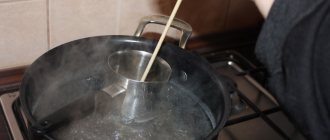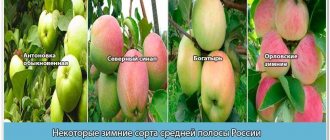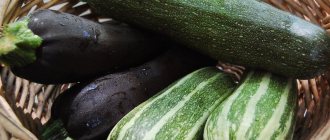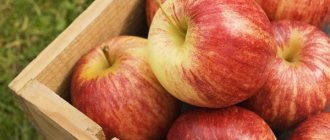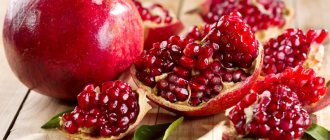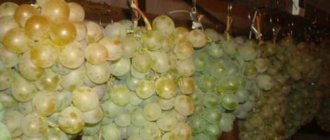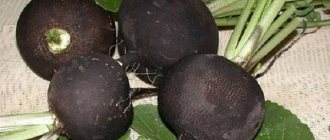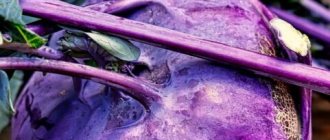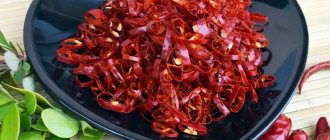General rules for storing seedlings before planting
For storage use containers with good ventilation . The seeds are stacked in several layers, but not higher than 30 cm. Self-harvesting is carried out at the end of August.
Whole bulbs are sorted without traces of rotting, dried in the fresh air in the shade or in a warm place at a temperature of +25...30°C.
It will be possible to keep the seedlings intact until planting only in a room where the temperature and humidity levels are maintained.
Rules for harvesting and preparing bulbs
In order for the heads to last as long as possible, you need to harvest correctly and in a timely manner. Keeping quality depends on compliance with the rules for collecting and preparing heads.
Signs that the bulbs are ripe:
- the beds began to lie on the ground and turned yellow;
- the top layer of the peel has dried out;
- The neck has dried out and become thin.
Sometimes it is advisable to speed up the maturation process. Two known methods are used for this.
- Soil is discarded from the stems so that they begin to turn yellow faster.
- Carefully trim the roots with a shovel.
To prevent ripening from being delayed, watering the onion sets is stopped 2 weeks before the expected harvest date, and the tops are bent to the ground.
Onions are harvested by hand. If the soil is light and loose, the heads can be easily pulled out of the ground by hand. In areas with heavy soil, you can dig using a fork or shovel. Lightly dig up the ground to pull out the bulbs.
In dry weather, you can leave the onions in the sun for several days along with the feathers. On cloudy days, the heads will need to be dried in a protected shelter with good ventilation. To speed up drying, the bulbs can be tossed.
If there are bulbs with a depressed neck, they are removed. They are affected by neck rot and will not be stored for long.
Choosing a storage location
To avoid early germination, onion sets are stored at a temperature of +2...3°C with a humidity level not exceeding 65%. Such conditions can be created in the basement or cellar. If the temperature is too low, the seeds will lose their viability.
Previously, onions were stored braided. During Soviet times, methods were improved: stockings, wicker baskets, bags made of natural material or boxes with holes were used for storage.
Plastic and wooden boxes
For long-term storage, choose small boxes. When using plastic boxes, they should have holes to allow air to flow evenly. The bulbs are stacked in several layers. This storage method is convenient when there is not enough space in the room.
Canvas bags
Choose small bags with a capacity of bulbs no more than 20 cm in height. They are stored filled, hanging from the ceiling or placed on stands, since contact with the floor or walls causes the accumulation of moisture and rapid rotting of the planting material.
Egg containers
If there is a lack of storage containers, egg containers are used. The trays are moved to racks or special stands and the onions are placed separately in each cell.
Optimal conditions
To create optimal conditions, pay attention to temperature, humidity and ventilation in the room. The most difficult task is ensuring a constant level of air humidity. When the temperature is high, the onion sprouts and putrefactive diseases develop; when the temperature is low, it dries out. Ideal figures are 50-65%.
To protect the crop from drying out, it is sprinkled with the remaining onion peels. Reduce indoor humidity by placing a container with lime, wood shavings or ash.
The room in which the onions are stored is ventilated. The boxes with the harvest are placed so that there are no obstacles to the free movement of air.
How to prepare sets for long-term storage
To keep onions for a long time, follow these rules:
- The sets are sorted and sprouted specimens are removed. The bulbs should be whole, with a dry tail.
- For planting, select seeds ranging in size from 1 to 2.5 cm.
- After purchase, the seed is dried at a temperature of +30°C for two days. This is done outdoors in the shade, or indoors in rainy weather. In a private house or apartment, onions are laid out next to heating devices, where the air temperature is +25...30°C.
- If there are traces of rotting on the surface, peel the onion. If it is necessary to completely remove the husk, the planting material is dried again. Then the top layer of the onion will turn into a covering scale.
- It is recommended to prepare in advance the room where the seeds will be stored. The underground is ventilated at the end of summer or early autumn. Equipment located in the cellar is dried in the fresh air. If mold is present, the damaged areas are cleaned. If there are rotten boards, they are replaced.
Features of cultivation
To understand agricultural technology, you need to understand the structure of the bulb.
At the bottom of family onions there is a heel - the place where the daughter bulbs are attached to the bottom of the mother bulb.
Usually, for planting, I use a bulb weighing about 100g. If you plant a whole bulb, all the buds will germinate and > 8 small bulbs will grow. The quantity depends on the variety. The larger the planting bulb, the more new bulbs are formed, but small ones.
Family onions are not a demanding crop, but without a certain amount of attention and compliance with certain rules, you cannot get a good harvest.
Soil preparation
It is preferable to plant shallots on fertile soils with neutral acidity. Compliance with crop rotation is a necessary condition for a good harvest and the prevention of onion diseases. The best predecessors for the crop will be legumes, carrots, beets, cabbage and potatoes. During autumn digging, humus (half a bucket per m2), superphosphate (1 tbsp per m2) and potassium salt (0.5 tbsp per m2) must be added to areas intended for planting onions. Onions will respond well to the pre-planting application of ammonium nitrate (1 tbsp per m2).
Landing dates
When choosing the time to plant a plant, you need to take into account the favorable temperature conditions. The best time to plant shallots is in April, along with sowing carrots. If you miss the deadline and plant when the soil is overheated, then active growth of the green part of the plant will immediately occur with insufficient development of the root system. And this will negatively affect the future harvest.
Planting is done with medium-sized bulbs. To get a harvest of large family onions, you should take the preparation of planting material seriously. It includes the following steps:
- Planting bulbs are cleaned of the upper scales, since various pathogens can be hidden under them.
- Etch for 20 minutes in a solution of copper sulfate (1 tablespoon per bucket of water) or in a pink solution of potassium permanganate. After this, the onions are rinsed with clean water.
Treating onions in a solution of potassium permanganate before planting in the spring helps protect the plant from diseases and pests
- Soak for 10 hours in a solution of complex fertilizer. This will allow the onions to regain some of the moisture lost during storage and replenish nutrients. Before soaking, it is recommended to trim the dry neck and bottom of the onion to clean white scales.
The bottom and dry neck of the bulb are trimmed to clean white scales
- Cut the planting bulbs in half. Each half will contain fewer buds, but as a result, the bulbs in the nest will grow larger.
The incision is made in the center of the bulb so that there are fewer buds in the planting material
- Sprout the prepared bulbs. They are placed in a container, covered with a lid or plastic wrap and taken out to a cool room until roots 3–5 mm long form.
In addition, when choosing a variety, it is important to take into account the ripening time. For example, late and mid-late varieties of heirloom onions may not have time to ripen properly in the northern regions
Storage methods
Depending on the variety, onions are stored warm, cold or combined.
Cold
This method involves placing the seed in a refrigerator, underground or cellar, where the temperature is kept within -3...-1°C. This will protect the bulbs from sprouting and drying out. Two weeks before planting, the seeds are heated to enhance the growing season.
Important! Under no circumstances should you use a balcony to store seedlings in winter. Constant changes in temperature will lead to rotting or death of planting material.
Warm
This storage method is suitable for those who plan to keep onions for sowing in the apartment. To do this, choose a dry, dark place where the air temperature does not exceed +17…23°C. Seeds are placed in boxes or bags.
The temperature and humidity in the apartment often change, so planting material is periodically poured out and checked for early germination and rot.
Combined
This method involves changing the temperature during storage. Keep the bulbs in a warm place until the first frost. With the beginning of winter, they are placed where the temperature does not drop below zero.
In spring, the seed is placed in a warm room heated to +25°C for 5 days. After this time, the temperature is reduced to +22°C and left until sowing into the ground.
The soil
Proper soil preparation is important for harvesting. If the seeds fall into the soil at a greater depth than required, they may germinate with their roots upward. The composition of the soil is also important. The best option is loamy soils subject to the application of mineral and organic fertilizers.
The place should be well lit and warm. An effective agronomic method is to place onions in beds where cabbage, tomatoes, and cucumbers were previously grown. The above-mentioned crops enrich the soil with nitrogen and contribute to abundant onion harvests.
The soil for the beds is prepared in the fall: they dig it up, add compost and mineral supplements. The prepared substrate is watered with a solution of copper sulfate.
When planting in the spring, it is better to prepare the soil in the fall - add all the necessary fertilizers, disinfect
In the spring, it is additionally recommended to add ash. Too much fertilizer will cause abundant green growth, and this may affect the size of the roots. Experienced gardeners experiment with several options until they find one that suits the soil perfectly. A few days before planting the seeds, the ground is covered with transparent polyethylene or dark film.
A method for treating a finished bed with the preparation “Baikal EM-1” is described. The product contains strains of beneficial microorganisms. When used, the culture receives protection from fungi and pathogenic bacteria. The process of humus formation is stimulated.
To treat finished beds, you can use the preparation “Baikal EM-1”
What to do if the seedlings begin to rot
To avoid the problem of onion rotting, it is important to properly prepare the planting material and provide suitable storage conditions . But even if all the rules are followed, the source of spoilage can be fungal diseases, stem nematodes, and onion root mites.
When the first signs of rot or spoilage appear, action is taken immediately. To begin with, pour all the planting material onto a flat surface and sort it, discarding all damaged bulbs. If traces of rot appear on the surface or the husks become wet, peel them and dry the onions in a warm place until a new husk forms.
Temperature
The maximum temperature for storage is +20 degrees, the minimum temperature is -1 degree. Ventilation of the room should be fairly regular. Strong enamel odors and various painting and household odors should be avoided. In case of non-compliance with the rules and regulations for storing onion tubers, the sets are not allowed to be planted. If the storage conditions are incorrect, the seed knocks out the so-called arrow, emptying the very center of the tuber. As a conclusion, loss of the previous and current harvest.
Onion tubers produced in early winter or late autumn should be stored only in a warm room with a good degree of ventilation, at a temperature of up to +20 degrees. An important point in storage is warming up the sets in the first 8 hours. Next, the room should be ventilated, and the heating of the tubers should be returned to normal mode to +20 degrees. If this storage scheme is not followed, the bow set will definitely shoot an arrow. Without warming up the tubers in the first 8 hours before laying, we have the opportunity to awaken the internal buds of the tubers and dissolve them ahead of schedule.
If you don't warm up the onion tubers, they will germinate prematurely.
I would like to note that by pre-warming the tubers, we will have a lower percentage of diseases such as downy mildew.
Shelf life
The shelf life of onions depends on the dormant stage of certain varieties and the sufficient content of essential oils and dry substances. Sets of late and spicy varieties are suitable for long-term storage. Early sweet ones, on the contrary, are not stored for more than two months - they begin to deteriorate and sprout.
White onions with yellow skins are the most popular and spicy. They are stored the longest if favorable conditions are created before sowing.
White onion seeds can be stored for up to six months, but are more demanding on indoor conditions. At high humidity, this variety begins to rot.
Red onions do not last long: under normal conditions - no more than two months.
Which varieties store best over the winter?
As a rule, golden varieties of seeded onions are stored the longest, for example:
- Stuttgarter Riesen;
- Sturon, Universo F1;
- Troy;
- Centurion;
- Hercules;
- Setton.
Among these varieties there are both mid-late and early ripening varieties. From red varieties you can choose :
- Red Baron;
- Red Carmen;
- Danilovsky 301.
All these varieties tolerate winter storage well, are resistant to rot and disease, and tolerate dry weather well.
White onions should not be left for storage all winter , just like many varieties of red ones. These species most often begin to rot or sprout before it is time to plant the bulbs in the soil.
Adviсe
A paper bag will help extend the shelf life. The bulbs are placed in a container, having previously made numerous holes with a hole punch. In such a package, the shelf life will increase to two months.
To keep the sets longer, it is recommended to cut off the top about 5 cm.
Rotating crops on the site will help prevent pest infestation. Onions are planted the next year after early potatoes, cucumbers or cabbage. The bed is reused for onions only after 3 years.
Reviews
Experienced gardeners share secrets on how to preserve onions until spring.
Tatyana, Rostov-on-Don: “We dug up the onions last week and put them under a shed to dry. Today I peeled the husk down to the first coat and put it in wooden boxes. In a week I plan to put it underground and leave it until spring. The temperature there is from 0 to +3°C, it is stored perfectly every year.”
Natalya, Volgograd: “We are used to storing onions in the apartment. I usually make holes in the box and put the seeds there. Then I put it in a dark place and take it out 2-3 times throughout the winter to check the condition of the sets. In winter, the apartment is dry, so the onions are stored until spring.”
Alena, Izhevsk: “I used to store onion sets in the refrigerator. But often at a temperature of 0...+4°C and high humidity, onions germinate. That’s why lately we put the seeds in the basement or bury them in the ground.”

